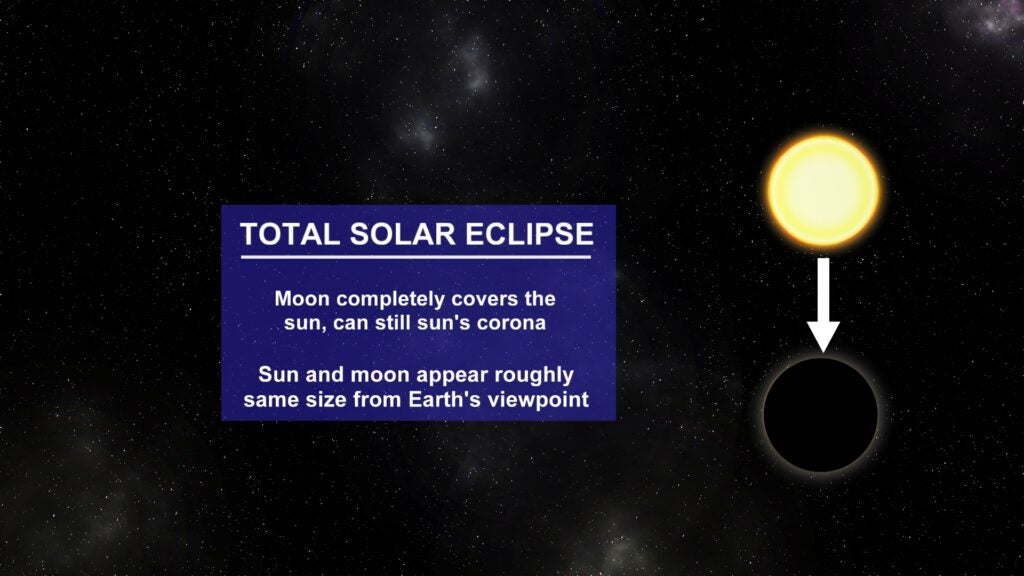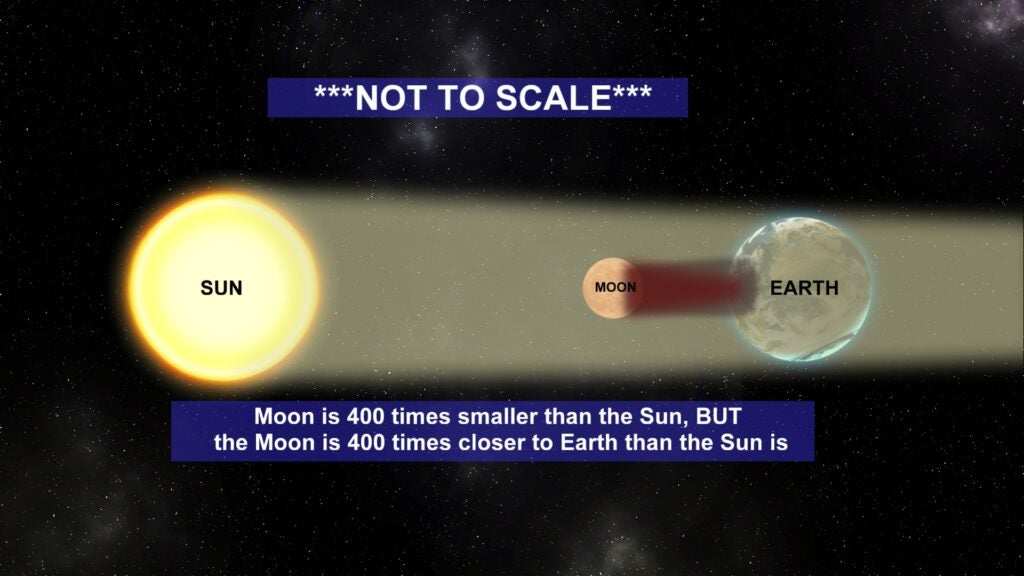Why Earth’s total solar eclipse is unique
INDIANAPOLIS (WISH) — We all know the sight of a total solar eclipse is a once-in-a-lifetime event. Earth’s solar eclipse is unique compared to the rest of the solar system. It all has to do with the size of the sun and moon from our vantage point on Earth.
Brian Murphy is a professor of physics and astronomy at Butler University. He says, “What’s unique about eclipses here on Earth is the sun and moon appear nearly the same size in the sky. So, we cover that bright surface of the sun, but it allows us to see that outer pearly corona of the sun.”

This happens because the moon’s diameter is roughly 400 times smaller than the sun, but the moon is about 400 times closer. We are living in a time when this coincidence makes for a spectacular total solar eclipse. Central Indiana will witness this perfect total solar eclipse on April 8.

Other planets are not nearly as lucky as Earth with their moon size compared to their vantage point of the sun. This is why the solar eclipse on Earth is truly different.
Murphy added, “If we were on Jupiter, the size of the umbra, the path of totality, would be the size of North America or even larger, and we would not see much of the sun when we would have these eclipses. Eclipses would be much more frequent, it would be dark for hours at a time, and it wouldn’t be as spectacular.”
Butler University to host Eclipse Festival
If you are looking for a spot to watch the total solar eclipse, Butler University will be hosting an Eclipse Festival beginning at 12:30 p.m. and wrapping up at 4 p.m. At 3:06 p.m. on April 8, the total solar eclipse will begin lasting 3 minutes and 50 seconds. More than a dozen telescopes will be on hand at Holcomb Observatory to witness this special event.


